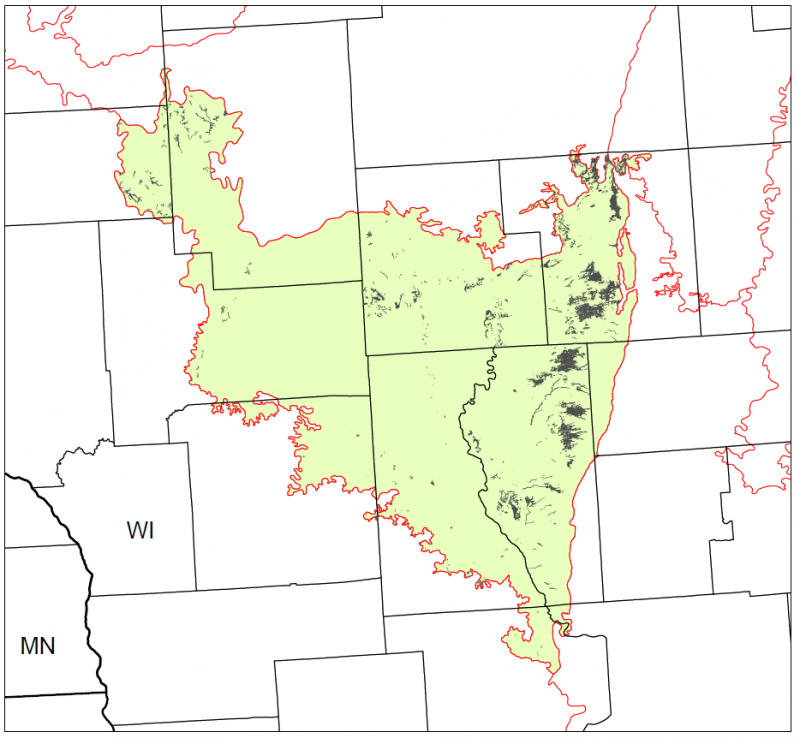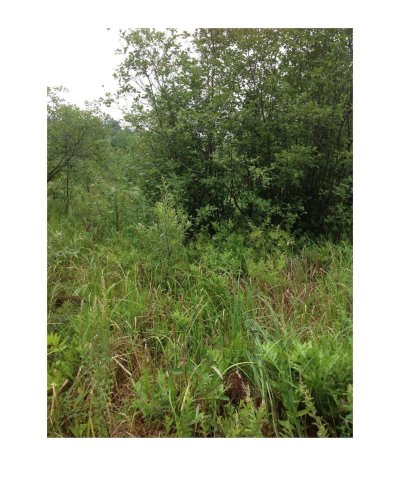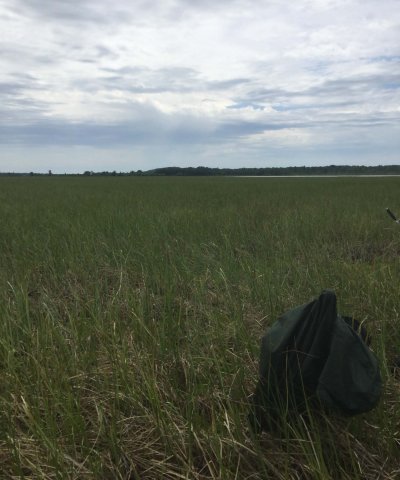
Natural Resources
Conservation Service
Ecological site F089XY002WI
Mucky Swamps
Last updated: 9/27/2023
Accessed: 12/21/2025
General information
Provisional. A provisional ecological site description has undergone quality control and quality assurance review. It contains a working state and transition model and enough information to identify the ecological site.
MLRA notes
Major Land Resource Area (MLRA): 089X–Wisconsin Central Sands
The Wisconsin Central Sands (MLRA 89) corresponds closely to Central Sand Plains Ecological Landscape published by the Wisconsin Department of Natural Resources (WDNR, 2015). Much of the following brief overview of this MLRA is borrowed from that publication.
The Wisconsin Central Sands MLRA is entirely in Wisconsin. The total land area is 2,187,100 acres (3,420 square miles, 8858 square kilometers). It is bordered to the east by Johnstown-Hancock end moraines, which were pushed to their extent by the west side of the Green Bay Lobe (Clayton & Attig, 1999). It is bordered to the southwest by highly eroded, unglaciated valleys and ridges. The dominant feature of this MLRA is the remarkably flat, sandy plain, composed of lacustrine deposits and outwash sand, that was once the main basin of Glacial Lake Wisconsin. It also features extensive pine and oak barrens and wetland complexes.
Glacial Lake Wisconsin was fed primarily by glacial meltwater from the north and east. The lake deposited silt overlain by tens of meters of sand (Clayton & Attig, 1989). The silty layers are closer to the surface in some areas, where they impede drainage and contribute to the formation of extensive wetland complexes. It is believed that Glacial Lake Wisconsin drained within several days after a breach in the ice dam that supported it. The catastrophic flood that followed flowed to the south and carved the scattered buttes and mesas protruding from the sandy plain in the southern portion of this MLRA. Before vegetation established after glacial recession, strong winds formed aeolian sand dunes that now support xeric pine and oak stands within the Wisconsin Central Sands.
The surface of the northwestern portion is mostly undulating. The sandy surface sediment was mostly deposited by meltwater during the Wisconsin glaciation. Gentle hills are a result of underlying bedrock topography. Valleys and floodplains are formed by stream action. The underlying bedrock controls the water table elevation and contributes to the formation of numerous wetlands.
Historically, the Wisconsin Central Sands were dominated by large wetland complexes, sand prairies, and oak forests, savannas, and barrens. Some pine and hemlock forests were found in the northwest portion. The Wisconsin Central Sands was subject to frequent fires, leading to today’s need for prescribed burns to maintain the area.
Classification relationships
Major Land Resource Area (MLRA): Wisconsin Central Sands (89)
USFS Subregions: Neillsville Sandstone Plateau (222Rb), Central Wisconsin Sand Plain (222Ra), and Lincoln Formation Till Plain - Mixed Hardwoods (212Qb)
Small sections occur in the Central Wisconsin Moraines and Outwash (222Kb) subregion
Ecological site concept
The Mucky Swamps ecological site is most common on the eastern portion of MLRA 89, located in depressions and drainageways on outwash and lake plains. The sites form in low positions on the landscape where bedrock is deep. These sites are characterized by very deep, very poorly drained soils that formed in deep organic deposits of primarily herbaceous origin. Some sites have underlying sandy outwash or loamy alluvium mineral deposits. These soils remain saturated throughout the year and meet hydric requirements.
Precipitation, runoff from adjacent uplands, stream inflow, and groundwater discharge are the primary sources of water. These sites range from strongly acid to slightly alkaline. Many of these sites have carbonates. These sites are wetlands.
Mucky Swamps sites have a higher pH Acidic Poor Fens, meaning they support different vegetative communities. The higher pH is a result of increased interaction with groundwater that may contain dissolved carbonates. In addition, some of these sites have carbonates present in the underlying loamy material. Acidic Poor Fens also interact with groundwater, but the groundwater moves through surrounding acidic materials and does not provide a buffer or raise pH.
Associated sites
| F089XY006WI |
Wet Sandy Outwash Lowlands Wet Sandy Outwash Lowlands consist of deep sandy deposits derived from a mixture of outwash, alluvium, and lacustrine sources. They are very poorly to poorly drained, remain saturated for much of the growing season, and are subject to frequent ponding. These sites are primarily found in the eastern half of the Wisconsin Central Sands MLRA. They occur slightly higher on the drainage sequence than Mucky Swamps sites and are often directly adjacent. |
|---|---|
| F089XY011WI |
Moist Sandy Outwash Uplands Moist Sandy Outwash Uplands consist of deep sandy deposits derived from a mixture of outwash, alluvium, and lacustrine sources. They are somewhat poorly drained and are subject to neither flooding nor ponding. They occur higher on the drainage sequence than Mucky Swamps sites. |
| F089XY017WI |
Sandy Outwash Uplands Sandy Outwash Uplands primarily consist of deep sandy outwash deposits. Soils are somewhat excessively to excessively drained and are primarily found east of the Yellow River. They occur much higher on the drainage sequence than Mucky Swamps sites. |
Similar sites
| F089XY001WI |
Acidic Poor Fen Acidic Poor Fens consist of deep herbaceous organic materials. These sites are wetlands. Like Mucky Swamps, they are very poorly drained and remain saturated throughout the year. Unlike Mucky Swamps, they are strongly to extremely acidic and, as a result, the vegetative communities on these two sites are quite different. |
|---|
Table 1. Dominant plant species
| Tree |
(1) Larix laricina |
|---|---|
| Shrub |
(1) Ledum |
| Herbaceous |
(1) Sphagnum |
Click on box and path labels to scroll to the respective text.
Ecosystem states
State 1 submodel, plant communities
| 1.1A | - | Periodic small-scale canopy disturbances provide adequate light for regeneration of canopy species, thus perpetuating the existing community. |
|---|---|---|
| 1.1B | - | Large-scale natural disturbance or tree harvesting, causing swamping of the site. |
| 1.2A | - | Slow accumulation of living and dead sphagnum moss layer. |
| 1.2B | - | Large-scale natural disturbance or tree harvesting, causing swamping of the site. |
| 1.3A | - | Colonization by trees with tolerance for prolonged flooding. |


